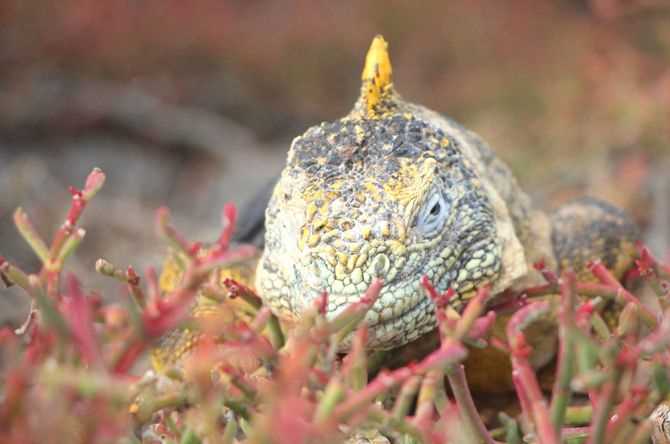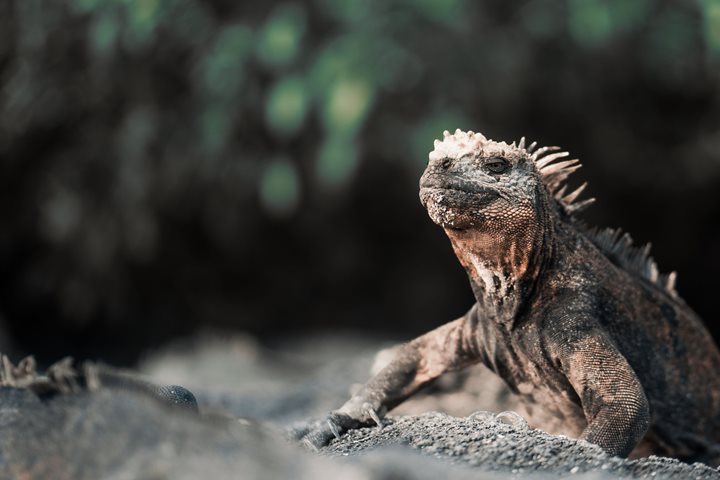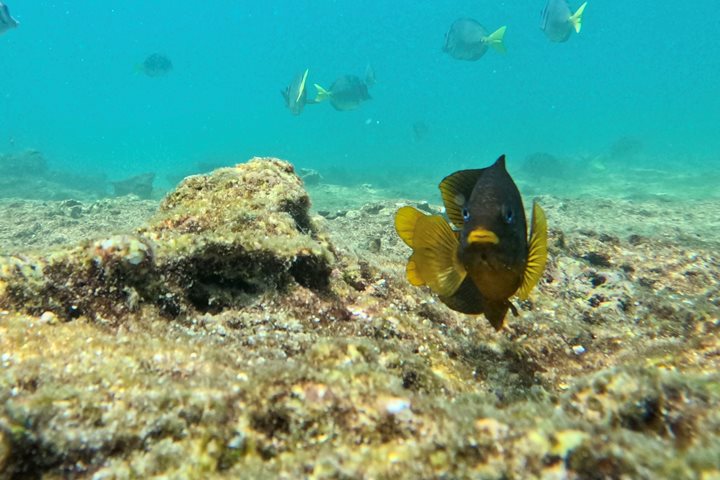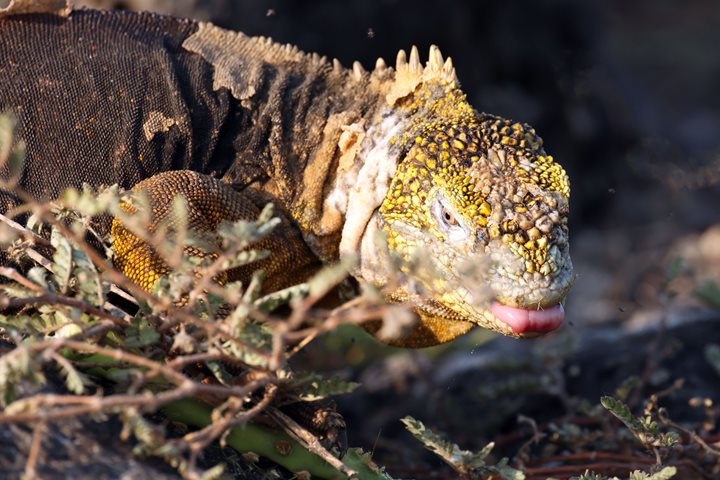After a filling breakfast we went in search of wildlife, and shortly after our dry landing encountered playful sea lions and land iguanas. The latter were in great numbers. Their rapid growth population is mainly due to the lack of any major predation from animals such as hawks, and competition for food. A large population of cactus trees keep the land iguanas healthy and shaded.
One of the most picturesque landscapes are found here; the ground is covered in portulaca with striking color, and the low elevation allows us to see almost every angle of it. Seagulls were plentiful, and many were seen nesting or feeding and protecting their chicks. To make the morning even more interesting some guests had a jump into the ocean from the ship.
In the afternoon, we navigated to neighboring Santa Fe for more exiting activities. Kayaks and paddleboards were lowered into the beautiful bay, giving guests an up-close view of the landscape and wildlife Santa Fe has to offer. Later, we landed on a white sand beach and encountered many sea lions - individuals or in groups, all doing something fascinating! We walked along a trail and found more wildlife, like the endemic Santa Fe land iguana, lava lizards, and many land birds. Even the bay’s shallow water harbored plenty of life like eagle rays, turtles, white-tip reef sharks and more.
Our day ended with a colored sky as the sun settled into the horizon.







